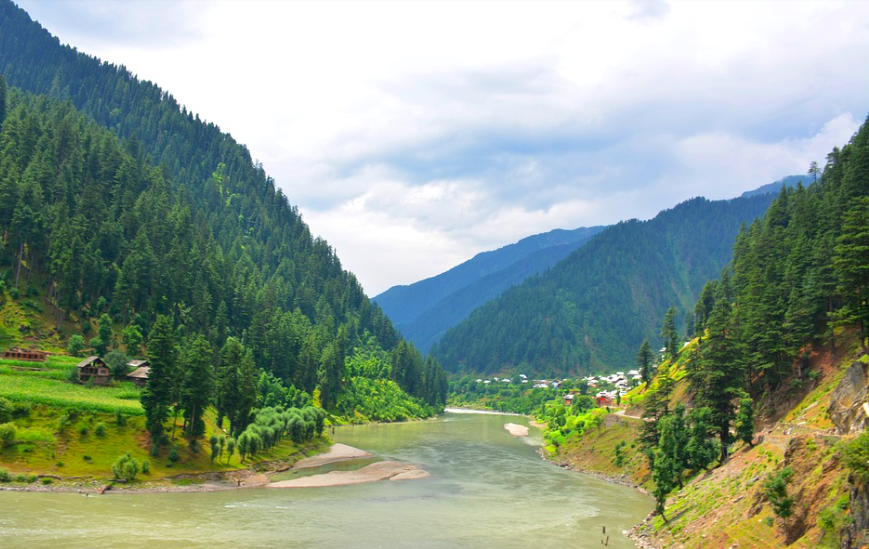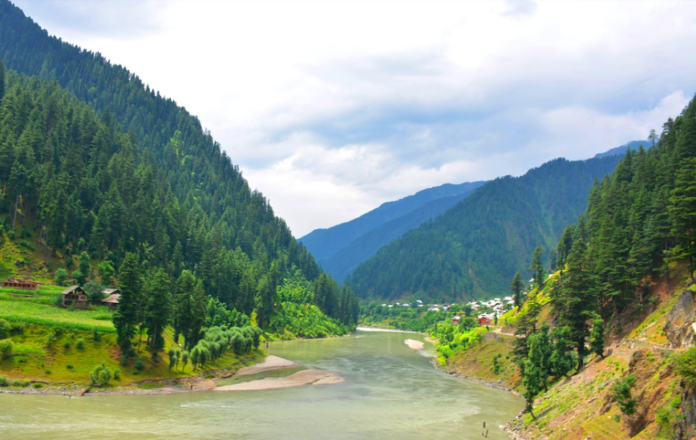On Feb. 14, a suicide bomber killed more than 40 Indian soldiers in Kashmir in what India claimed was a terrorist attack. India retaliated by bombing a terrorist training camp, which turned out to be an uninhabited mountain top. The Pakistani air force shot down an Indian jet fighter, and India shot down a Pakistani plane.

Diplomats and the mainstream media focused on the danger of another war between the two nuclear armed countries. But the major media provided less information about the flashpoint for the crisis: India’s brutal occupation of Kashmir.
Assistant Professor Junaid Ahmad, director of the Center for Global Dialogue at the University of Management and Technology in Lahore, Pakistan, said in a phone interview that the conflict reflects “the bitterness and anger that remains from the British partition of the region back in 1947.”
Why the conflict?
Years ago, I reported from a farm near the Pakistani controlled part of Kashmir. It was only accessible by four-wheel drive vehicle or on foot. Kashmir is spectacularly beautiful, with rolling hills and a lush valley. In years past it was tourist destination and could be again if the conflict is ever resolved.
But if you live near the border with India these days, you’re hunkering down in bomb shelters to avoid errant Indian artillery fire. Civilians on the Indian side of the border face the same danger when Pakistani guns overshoot their targets.
I learned from my hosts that a number of major rivers flow through Kashmir, a vital source of drinking water, irrigation, and hydroelectric power for both countries. Whatever country controls the water has a major impact on the entire region.
Many years ago US water expert David Lilienthal wrote, “No army, with bombs and shellfire could devastate a land as thoroughly as Pakistan could be devastated by the simple expedient of India’s permanently shutting off the sources of water that keep the fields and the people of Pakistan alive.”
A 1960 treaty allows Pakistan to use most of the water, but India has consistently tried to take back as much as it can.
Prof. Ahmad said Kashmir also occupies an important geopolitical location in an area that borders India, Pakistan, and China. The country that dominates Kashmir has “strategic leverage” in the region, he said.
In 1947, when India took control of Jammu and Kashmir, as the Indian state is formally known, “battle lines were drawn,” he said. “Indian leaders refused to let go. It gives India an excuse to keep 800,000 troops near the border with Pakistan.” Western media sources estimate the number of troops at closer to 500,000.
Colonial rule and Kashmiri rebellion
The British colonial presence in the Indian subcontinent dates back to the 1700s. British rulers used classic divide-and-conquer tactics by inciting conflict between Hindus and Muslims.
When India gained independence in 1947, a bitter struggle broke out. India was to become a predominantly Hindu country while Pakistan was overwhelmingly Muslim. A Hindu maharaja ruled over the principality of Kashmir, which was mostly Muslim. The maharaja brought Kashmir into India. A war broke out; India took control of land containing the majority of the Kashmiri population and Pakistan took the thinly populated remainder. The countries fought two more wars over Kashmir in 1965 and 1999.
Indian leaders have continuously argued that Kashmir is legally part of India. The opposition to India’s rule is fueled by Pakistan, they claim, and is dominated by Muslim terrorist groups. They further assert that the people of Jammu and Kashmir are happy with Indian rule.
In reality, the people of Kashmir have never acceded to Indian occupation. Human rights groups, including the International Committee of the Red Cross, have accused the Indian military of detention without trial, torture and murder. Indian repression has resulted in 100,000 civilians deaths between 1989-2011, according to Pakistani media. The Associated Press estimates 70,000 deaths between 1989 to the present.
In 1989, Kashmiris launched an armed rebellion against Indian rule. Indian authorities claimed that the Kashmiris were armed by Pakistan and led by Muslim extremist groups. But the movement’s leading organization, the Jammu Kashmir Liberation Front, was secular. As Ahmad explained, the movement contained both secular and religious components, much like the Arab Spring of 2011.
The key element, he said, was that the 1989 uprising “was entirely indigenous. It was a mass uprising.”
The mid-1990s saw the rise of conservative political Islamist groups sponsored by the Pakistani military and intelligence services, which sought to control the Kashmiri movement for their own interests.
The Jaish-e-Mohammed (JEM), for example, has bombed civilians and engaged in plane hijacking. It took credit for the suicide explosion that killed the Indian soldiers last month. JEM adheres to a right-wing ideology based on political Islam, and an extremist interpretation of Sharia law.
India accuses the Pakistani government of supporting and giving sanctuary to the JEM. “If the Pakistani state is not supporting them,” conceded Prof. Ahmad, “it’s certainly not stopping them. That’s unfortunate because it allows India to portray the struggle as dominated by terrorists.”
Other major protests broke out in 2010 and 2016. The Kashmiri resistance includes secular and religious forces, including extremists, according to Prof. Ahmad. But the recent demonstrations indicate a unified opposition to Indian rule across ideological lines. “All of the previous divisions within the resistance have collapsed.”
For decades Kashmiris have called for a plebiscite to determine the future of their region. But India has refused. The results of an authoritative 2010 poll by the British Chatham House explained why.
The survey found that 43% of respondents in both Indian and Pakistani controlled Kashmir supported independence. Fifteen percent favored unity with Pakistan. Only 21% favored unity with India, and that was almost exclusively within the Indian/Hindu population.
US Role
I think that a resolution of the Kashmir crisis will require forceful diplomatic pressure. The US claims neutrality, but has in recent years, tilted towards India. In his second term, President Barak Obama sought a strategic shift to Asia in which he wanted to ally with India to combat China. President Donald Trump continued the tilt last year by reducing US military aid to Pakistan. Trump, like his predecessors, has never forcefully condemned Indian brutality in Kashmir.
I think the US should commit to genuine neutrality in the India-Pakistan conflict. The US could be an honest broker in arranging a referendum in Kashmir and guaranteeing that all parties adhere to its results. It would be a good step forward in replacing military conflict with diplomatic action.
Reese Erlich’s nationally distributed column, Foreign Correspondent, appears every two weeks in 48Hills. His book The Iran Agenda Today: The Real Story from Inside Iran and What’s Wrong with US Policy is now available. Follow him on Twitter, @ReeseErlich; friend him on Facebook; and visit his webpage.





